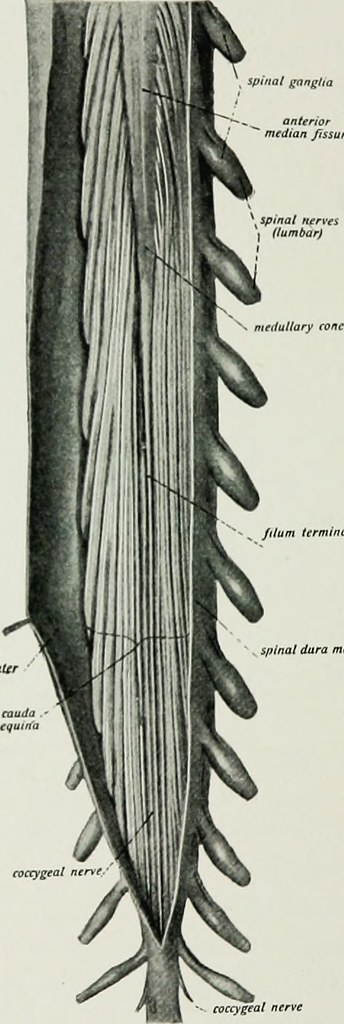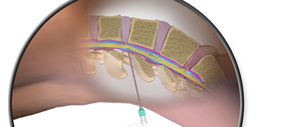 |
| A fictional heavy-metal band used the name Spinal Tap. I guess it sounded like something scary, but it is a routine procedure in neurology. |
Lumbar puncture (also known as spinal tap) is a valuable test for many neuro-ophthalmologic conditions.
In neuro-ophthalmology we are mostly concerned about what is going on inside the head. However, there is no safe place to insert a needle around the eyes or anywhere near the head. But the optic nerves are connected to the brain, the brain is connected to the spine and the spine runs from the neck all the way down to the back. The fluid is all connected. In the lower back it is safe to place a needle since at that level there are just a bunch of loose nerves that can move out of the way of a needle. (I talked to a surgeon once who described the nerves like a pot of spaghetti filled with limp noodles.) This location is basically the same place an anesthesiologist places their needle to do an epidural, which is very common during labor and delivery.
There are two things we can learn. We can connect the needle to a pressure gauge and measure how high the opening pressure is. If the pressure is high, then extra fluid can be removed to lower the pressure.
We can also send that fluid to the lab to look for any evidence of infection or inflammation like cells and protein levels. We can sometimes do more specialized tests to look for specific diseases like multiple sclerosis.
The procedure can be done in the office or in the radiology department. The radiologist has the advantage of using x-rays to make sure the needle goes into the small space between the spine bones.
Rarely, procedures of all sorts can cause complications like bleeding or infection. This really is uncommon.
However, a common complication is a low-pressure headache.
If a patient has a high pressure to start with, then the lumbar puncture can relieve that pressure and sometimes patients say that it feels great. But if the pressure drops too low, they can start to get a new type of headache. This is sometimes called a LP headache or a post-dural-puncture headache. This occurs if the cerebrospinal fluid gets too low. The fluid is there to support the brain. If the pressure gets too low, there isn't enough support for the brain. Then if they stand up the brain sags a bit and the head hurts. If they lay down, it usually feels a lot better.
Sometimes this low-pressure headache is short lived. Sometimes it lasts for days.
Conservative treatment is to drink plenty of fluid and lay down as much as possible. Eventually the puncture will heal, and the pressure will build back up. Also, caffeine can help with this type of headache.
If the patient was given medication to lower the pressure (like Diamox) it should be paused during the low-pressure situation.
If the low-pressure headache does not resolve in a few days, then the patient might consider treatment. This would require another procedure called a blood patch. Basically, an anesthesiologist can take blood from your own arm and then inject that into the spot where the procedure was done. The blood will form a clot inside the back and seal the leak. This is usually an effective treatment, but you can see the challenge of getting one procedure that leads to another and each time increase the risk of more complications. So, generally I recommend conservative management for as long as the patient can tolerate it.
In summary, lumbar puncture is a routine neurologic test to check the cerebrospinal fluid. We can measure the pressure and analyze the fluid. The most common complication is a low-pressure headache, which can be treated with conservative measures or an additional procedure.

